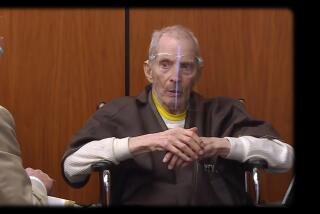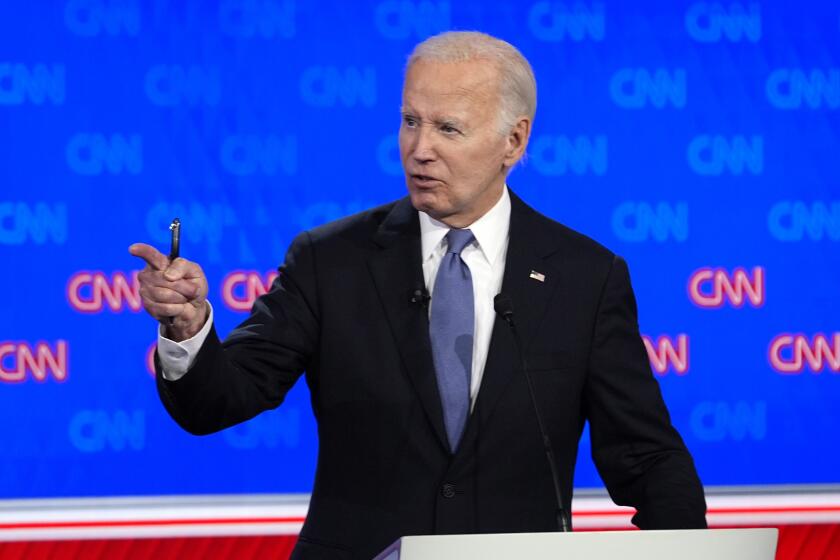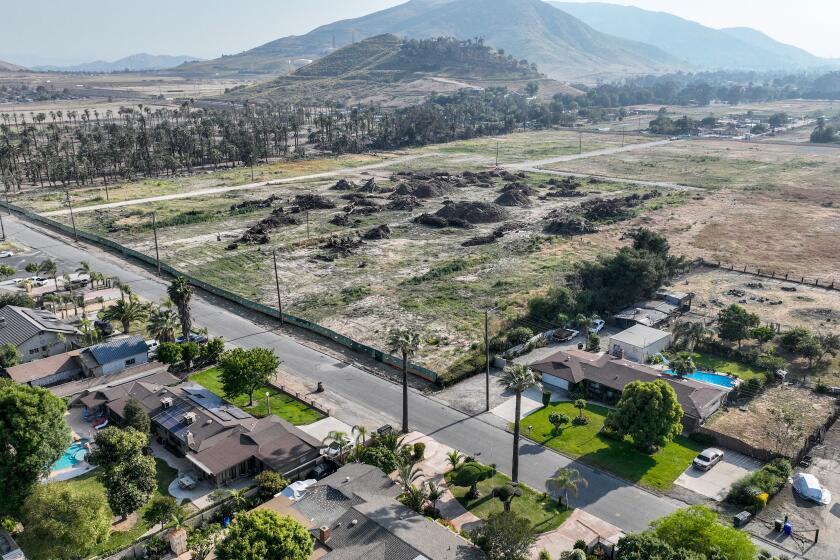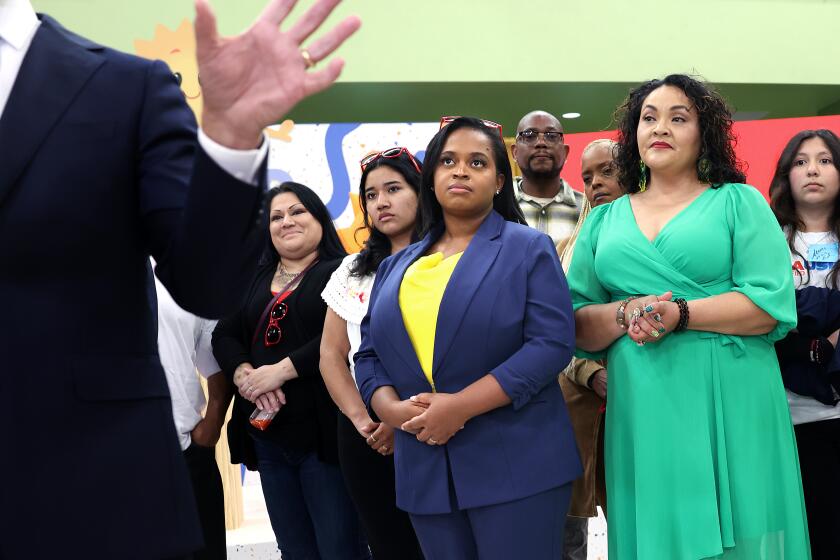Robert Durst’s defense: He found his friend’s dead body and fled in panic

Robert Durst will testify in his trial against the charge that he killed his close friend, his lawyers said Tuesday as they revealed a new line of defense: that Durst discovered the dead body of Susan Berman after she was shot in the head in her Los Angeles home, and that he fled out of fear.
Attorney Dick DeGuerin told jurors in his long-awaited opening statements that Durst not only was in Los Angeles around the time of Berman’s slaying just before Christmas in 2000, he was right at the scene.
“When Bob showed up and found her dead, he panicked,” DeGuerin said in a crowded eighth-floor courtroom near Los Angeles International Airport. “He wrote the anonymous letter so her body would be found, and he ran,” DeGuerin said, referring to the so-called “cadaver note” that alerted Beverly Hills police to Berman’s dead body.
“He‘s run away all his life,” DeGuerin added.
The Los Angeles County district attorney’s office has alleged that Durst, the heir to a Manhattan real estate fortune, killed Berman either on the night of Dec. 22 or morning of Dec. 23 in 2000. Prosecutors contend that Durst killed Berman to prevent her from spilling incriminating information about the 1982 disappearance of his first wife, Kathleen, whose body was never found.
The defense’s presentation Tuesday came after a three-day opening statement by Deputy Dist. Atty. John Lewin, who portrayed Durst as a triple-murderer for killing his first wife, his close friend Berman, and his neighbor in Galveston, Texas, Morris Black. Durst was acquitted in Black’s killing in 2003 after claiming self-defense, though he admitted dismembering Black’s body in a fearful panic and disposing of his limbs in the Gulf of Mexico.
DeGuerin, who led the successful defense of Durst in Galveston, began Tuesday by showing the 12 jurors and 11 alternates a white card with the Greek letter pi. The letter also is a legal shorthand for the plaintiff or prosecution, DeGuerin explained.
“The reason I have this in front of you is to tell you: You haven’t heard the whole story. You’ve heard the prosecution side,” DeGuerin said. He followed by holding up a card with the Greek letter delta, which refers to the defense. “It’s my simple way of illustrating there are two sides to every story.”
What led Durst to Berman’s home just before Christmas in 2000, the lawyer said, was a tradition among friends. Durst, estranged from his family, had a “pattern” of seeing Berman around the holidays.
“Susy was alone. Bob was not happy with his family. She and Bob were the closest of friends,” DeGuerin said.
David Chesnoff, a veteran Las Vegas lawyer on the defense team, said that Durst was driving from northern California, part of a planned trip to see Berman, who had told her friends the visit would be filled with festivities.
“If this was some plot by Mr. Durst to commit a premeditated murder,” Chesnoff said, “you don’t plan a party.”
Durst made it to Bakersfield on the night of Dec. 22, 2000, the lawyer said, but checked into a hotel because he was suffering from migraines and neck pains. He called Berman to tell her he’d pick her up the next day at home. The two planned to dine at the Rose Cafe in Venice, Chesnoff said.
When Durst showed up at Berman’s home on Dec. 23, he found her dead and then scrawled out a note to Beverly Hills police, telling them a “cadaver” was at her address.
“Bob was scared,” Chesnoff said. “He didn’t want to just leave her there, but he couldn’t call himself.”
The defense lawyer proceeded to highlight what he deemed failures in the police investigation after Berman’s killing.
“The investigation didn’t produce one piece of forensic evidence for you to consider,” Chesnoff said. There were no fingerprints or DNA related to Durst at Berman’s home, the gun was never found, and the LAPD had not properly secured the crime scene, the lawyer claimed.
And Chesnoff pointed to elements at the home that suggested a struggle, or warranted further inquiry: Berman’s phone was off the hook, and her dogs, which were running loose around Benedict Canyon, prompting a neighbor to phone police, had their leashes on.
“The investigation in this case was sloppy, it was incomplete, and no efforts were made at the time to find the real killer,” Chesnoff told the jurors.
During his opening on Tuesday morning, DeGuerin, the lead defense attorney, focused much of his time on chipping away at the prosecution’s efforts to link Durst to a trifecta of killings. He referred to the dismemberment of Black’s body in 2000 as “the elephant in the room.”
“I know it concerns everyone,” he said.
DeGuerin told jurors that the gruesome details of Black’s death were separate from Berman’s killing, and called its inclusion in Lewin’s opening statement a “calculated” move by the prosecution “to obscure everything else.” He drew three buckets on a poster board, and labeled each: one for Durst’s wife; one for Susan Berman; and one for Morris Black.
“The Morris Black bucket is full. And it’s full of bad stuff, bad evidence. And our concern is that the evidence about Morris Black will spill over into those other buckets.”
He portrayed Durst as autistic, ailing and unusual.
“Bob doesn’t make good decisions. It’s part of his makeup,” DeGuerin said. He said Durst’s “emotional condition” was a mild form of autism that was previously known as Asperger’s syndrome and said he suffered from social awkwardness, a lack of expression of emotion and an inability to read social cues.
Durst self-medicated, smoking marijuana on a daily basis, drinking alcohol and also abusing methamphetamine, DeGuerin said.
He pointed to Durst and outlined his medical problems: esophageal cancer, two spinal surgeries, brain surgery and a general difficulty with walking and maintaining his balance.
Durst, who will turn 77 next month, sat quietly next to his defense lawyers, staring at a tablet displaying a real-time transcript of the proceedings.
DeGuerin suggested that Durst was the victim of “gotcha journalism” in the form of the HBO documentary “The Jinx: The Life and Deaths of Robert Durst.” Durst was arrested on the eve of the series’ finale, and excerpts of the hours of interviews Durst gave to the filmmakers comprised much of the prosecution’s opening statement.
Lewin, the prosecutor, told jurors that Durst’s comments captured by “The Jinx” filmmakers amounted to a confession.
DeGuerin, who also agreed to be interviewed and was featured in “The Jinx,” said the series was “deviously misleading” and “heavily edited.”
“I’ll show you how that got us here today,” he promised.
More to Read
Start your day right
Sign up for Essential California for news, features and recommendations from the L.A. Times and beyond in your inbox six days a week.
You may occasionally receive promotional content from the Los Angeles Times.







